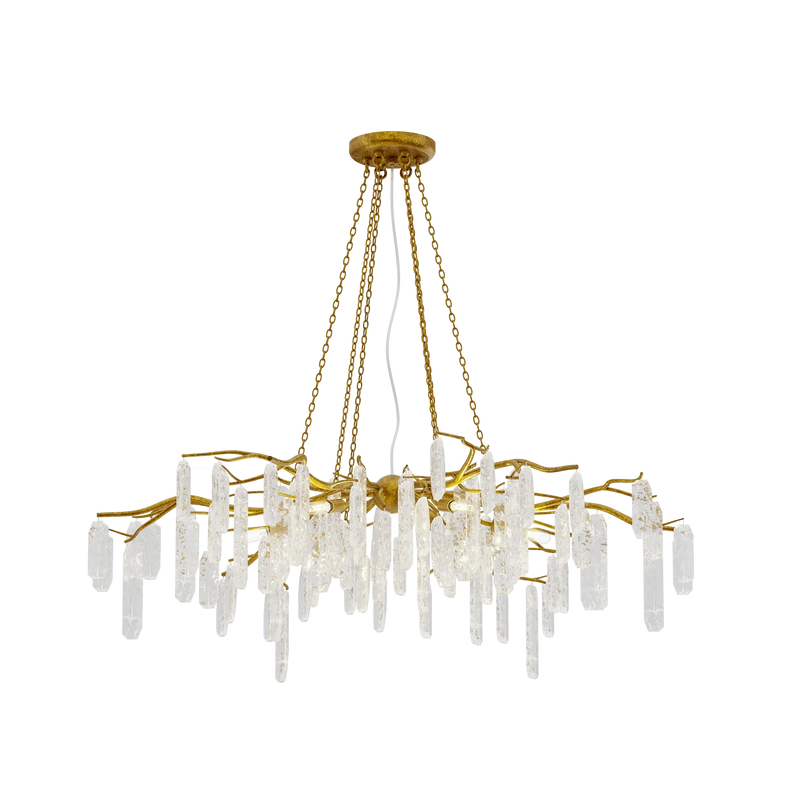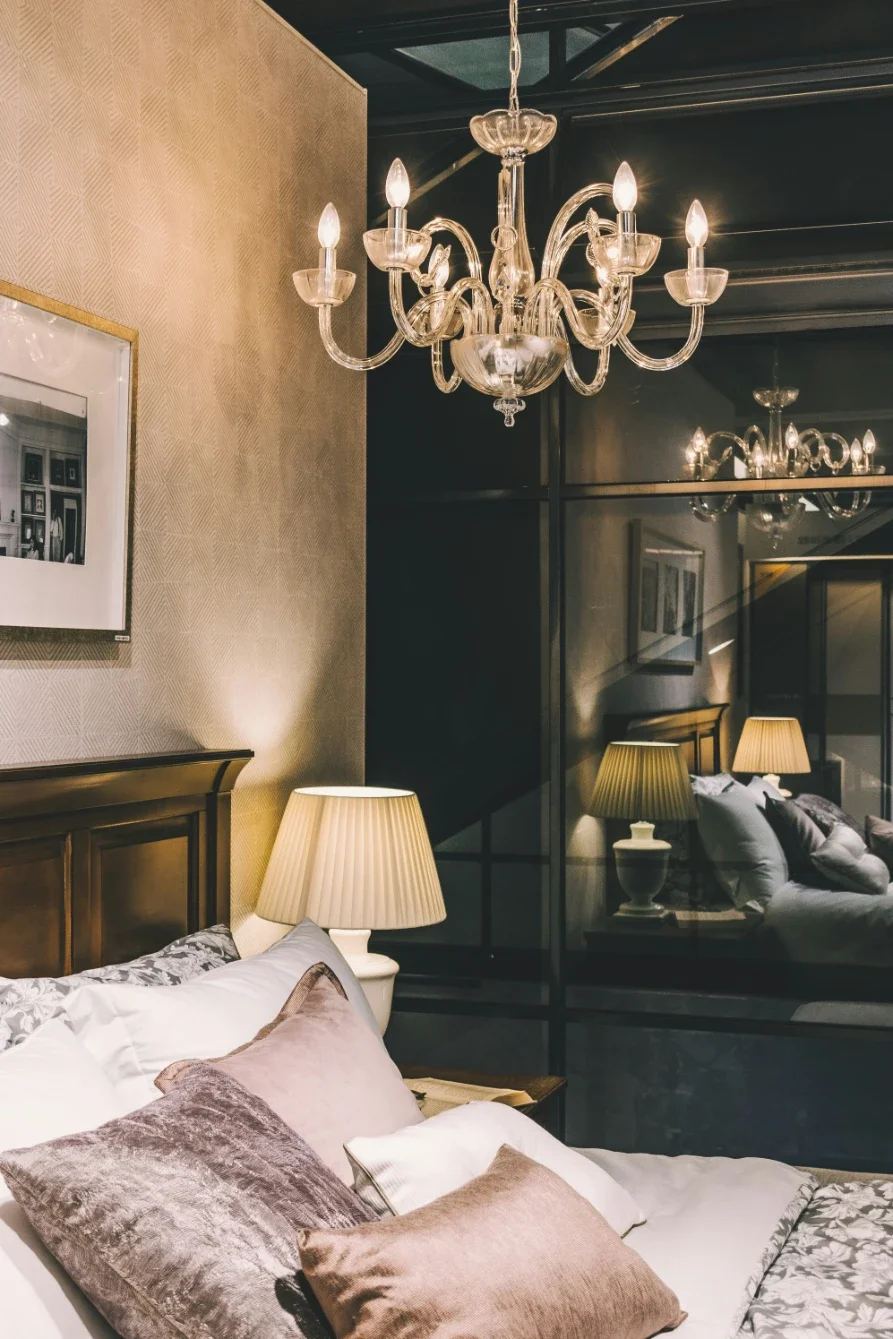Are Crystal Chandeliers Still In Style in 2025
Discover whether crystal chandeliers still shine in 2025 and how modern designs keep this timeless lighting fixture elegant and relevant in today’s homes.
7 Quick Answers You Can Use Today ✨
Short answer: yes—crystal chandeliers are absolutely in style in 2025. The look has evolved (think slimmer frames, mixed metals, and warm LED sparkle), but the core idea—a statement light that makes your room feel special the second you flip the switch—is more popular than ever. Recent roundups and buying guides from leading design outlets still feature crystal options front and center, which is a reliable sign these fixtures remain “it” pieces rather than relics.
Key takeaway: if you love the shimmer, you don’t have to choose between “classic” and “current.” Pair crystal with updated silhouettes, efficient bulbs, and a finish that matches your hardware, and you’ll land a look that feels both timeless and right-now.
A crystal chandelier can turn an ordinary entry into a moment—every day.
Why Crystal Chandeliers Still Work in 2025 (The 7 Signs)
Statement lighting is still the star. Design media continue to highlight chandeliers—crystal included—as room-defining pieces that set the mood and act like “jewelry” for your home.
They’ve modernized. You’ll see airy frames, linear drops, and mixed materials (crystal + blackened brass, crystal + rattan shades) that play nicely with contemporary spaces.
LED sparkle, lower bills. With efficient LEDs, you get bright, dimmable light and cooler operation. U.S. standards are pushing bulbs above 120 lumens per watt, which means more light for less energy.
Smart-home friendly. Many crystal fixtures now accept smart bulbs or dimmers, so you can set scenes (dinner, movie, cleanup) from your phone.
More rooms welcome them. Beyond dining rooms, smaller crystal pieces work over kitchen islands, in primary baths (rated for damp areas), and even bedrooms for a soft, hotel-like glow.
Retail support is strong. Major retailers and curated lists still stock crystal styles across budgets, which usually indicates real demand, not a cameo trend.
They photograph beautifully. When you sell or rent, listing photos love a tasteful chandelier—it reads “finished” and “cared for.”
How to Choose the Right Crystal Chandelier for Your Room
Use this simple, two-step approach: size it right, then light it right.
1) Size it Right (so it looks balanced, not bulky)
Formula A — Quick diameter rule (no tools needed):
Recommended diameter (inches) ≈ room length (ft) + room width (ft)
Example: If your dining room is 12 ft × 10 ft, aim for a chandelier around 22 inches in diameter. For rectangular tables, consider linear crystal bars roughly ½ to ⅔ the table length. If the fixture looks visually heavy or overextends past table edges, go a size smaller or try a linear design.
2) Light it Right (so dinners look amazing, not washed out)
The Illuminating Engineering Society (IES) suggests 10–20 foot-candles for dining rooms. That converts neatly into a lumen target:
Formula B — Brightness-by-room:
Total lumens ≈ room area (sq ft) × target foot-candles (10–20 for dining)
Example: A 12 ft × 10 ft dining room equals 120 sq ft. At 15 foot-candles, you’ll want about 1,800 lumens total across the chandelier (plus any wall sconces). Choose LED bulbs that reach this total and dim them down for mood lighting.
Hang the bottom of the chandelier about 30–36 inches above a dining tabletop for an 8–9 ft ceiling; add roughly 3 inches for every extra foot of ceiling height.
Which Upgrade is Easiest and Fastest?
There are three main ways to upgrade a crystal chandelier, depending on your time and goals:
Refresh: This takes about 1–2 hours. Deep clean the fixture, switch to dimmable LED bulbs, and add new shades. It’s best if you want a quick win without changing your existing chandelier.
Reframe: Plan around 2–4 hours to replace the chain or update the finish while keeping the same crystal drops. This option works well if you want to modernize a traditional chandelier.
Replace: Expect 2–5 hours for a full swap with a new crystal chandelier—either linear or round. Choose this route when the current fixture is the wrong size, outdated, or requires too much maintenance.
Brightness & Bulbs: a 2025 Cheat Sheet (with Real Numbers)
LEDs now deliver the same—or even better—sparkle while using far less energy. U.S. standards are pushing most bulbs above 120 lumens per watt, and ENERGY STAR recommends shopping by lumens (brightness) rather than old-school watts.
For example:
A 40W incandescent gives 450–500 lumens, while an LED replacement only needs 4–6W, saving about 85% energy.
A 60W incandescent produces 800 lumens, needing just 8–10W in LED form—an 80–85% cut.
A 75W incandescent outputs 1,100 lumens, replaced by an 11–13W LED, again saving 80–85% energy.
(Source: ENERGY STAR quick tables and shopping guidance.)
Same sparkle, dramatically less energy with LED bulbs.
Real-life Savings: Do the Math Once, Pocket it Every Year
Electricity prices matter when you run a multi-bulb chandelier. The U.S. Energy Information Administration forecasted average residential prices around 16.8¢ per kWh in 2025. If prices rise, efficient bulbs save even more.
For instance, replacing a 10-bulb chandelier that uses 40W incandescents (total 400W) with 6W LEDs (total 60W) saves 340W.
Daily use of 2 hours = 0.34 kW × 2 h = 0.68 kWh/day saved
Over a year: 0.68 × 365 = 248.2 kWh saved
At $0.168/kWh, that’s roughly $41.69 per year back in your pocket
If you dim to 50% brightness during long dinners, you cut wattage—and cost—even further. With modern dimmable LEDs, you’ll also get a warm, candle-like sparkle.
Here’s how the annual costs compare:
A 10-bulb chandelier using incandescent bulbs consumes about 400W, translating to 292 kWh/year and roughly $49.06 in electricity.
Switching to LED bulbs cuts that to 60W, or 43.8 kWh/year, costing only $7.36.
That’s an annual saving of about 248.2 kWh or $41.69—just by switching bulbs.
Make it Look Current in Minutes
Swap the bulbs: Choose warm (2700–3000K) dimmable LEDs rated around 800 lumens per bulb if replacing a 60W equivalent. ENERGY STAR–certified bulbs ensure tested performance.
Unify finishes: Match the canopy and chain to your room’s hardware—black, brass, or nickel. A contrasting finish against crystal often feels modern and intentional.
Layer light: Add wall sconces or a floor lamp to share illumination, letting the chandelier provide mood rather than all brightness.
Pair your chandelier with dimmers and secondary lights for instant atmosphere.
Common Pitfalls (and how you’ll dodge them)
Too bright or too flat: Avoid overly cool or non-dimmable bulbs. Choose 2700–3000K dimmable LEDs, aim for the right lumen total, and mix in candles for sparkle.
Wrong scale: Tiny chandeliers get lost in large spaces. Use the diameter formula, or go for linear crystal bars or dual pendants for long tables.
High maintenance: Dust dulls the sparkle. Use a microfiber glove monthly and deep clean quarterly. For easier care, pick fixtures with fewer, larger crystals.
Everyday Scenarios (so you can picture it)
Rental dining nook: Try a plug-in swag crystal pendant with adhesive cable clips—portable and removable.
Small bedroom: A drum-shade chandelier with subtle crystal details adds hotel-style softness.
Busy family kitchen: A linear crystal bar over the island adds shine while task lights keep work zones bright.
Clean + LED + dimmer: the fastest route from dated to dreamy.
FAQs You’re Probably Wondering About
Is crystal too “fancy” for casual homes? Not if you choose light, minimal forms with matte or blackened finishes. The contrast feels modern, not formal.
Will it clash with minimal decor? A slim crystal chandelier becomes a sculptural focal point—intentional, not cluttered.
What about safety and brightness standards? Follow the IES lumen method and choose certified bulbs. ENERGY STAR’s guides are great quick references.
If You Like Sources (and Free Tools), Start Here
What a chandelier is (Wikipedia) — a refresher on definition and history.
U.S. DOE update on bulb efficiency rules — why modern LEDs save so much.
EIA’s 2025 electricity price outlook — use local cents/kWh to estimate savings.
ENERGY STAR: Learn about LED lighting — practical tips on lumens, color, and dimming.
Consumer Reports: understanding LED bulbs — unbiased shopping advice.
Architectural Digest: lighting stores list — trusted online shops for chandeliers.
Quick-reference: Room-by-room Lumen Targets
To help you plan your lighting:
Dining room: Needs around 10–20 foot-candles. For a 12×10 ft room (120 sq ft), that’s 1,200–2,400 lumens total.
Bedroom: Also 10–20 foot-candles. A 12×12 ft room (144 sq ft) should aim for 1,440–2,880 lumens.
Foyer: With 10–20 foot-candles, an 8×10 ft space (80 sq ft) will need about 800–1,600 lumens.
Use the brightness formula above to fine-tune these values for your space.
Maintenance that Keeps the Sparkle (and sanity)
Monthly: Dust with a microfiber glove while bulbs are off and cool.
Quarterly: Support each crystal, clean gently with a damp cloth sprayed with cleaner (never directly on the fixture), and dry thoroughly.
Yearly: Inspect connections, tighten any loose prisms, and ensure your dimmer and bulbs are compatible to prevent flicker.
Proof it’s Not “Over” for Crystal
Recent design trend reports and retailer showcases confirm that crystal chandeliers remain stylish in 2025. Thanks to LED technology and energy regulations, they’re also easier to maintain and more efficient than ever.
Definitions (so we speak the same language)
Chandelier: A multi-arm ceiling light (originally candlelit) that often uses glass or crystal to refract light and create sparkle. (Fun fact: the word comes from the French for “candleholder.”)
Wrap-up: Your Action Plan
If you love the look, keep it! Measure for size, calculate lumens using the formula above, choose warm dimmable LEDs, and coordinate finishes with your decor. You’ll have a chandelier that feels classic, saves energy, and makes every day a little more special.





